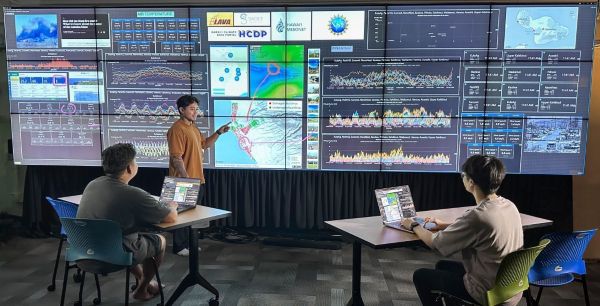Please welcome back Tarina Hawkins. Tarina loves researching and writing on many topics. She prides herself in taking complex subjects and making them easy to understand. When not writing, she enjoys being outdoors in summer weather. Her topic today is how the workplace, already disrupted by the recent pandemic, is being reinvented by the technological innovations that have emerged recently including artificial intelligence (AI) and virtual reality (VR).
Strong teams are the backbone of businesses. The benefit to businesses comes from having a mix of different perspectives and solid communication. An It’s Your Yale article highlights great teamwork as a way to boost results and make organizations more effective in measurable ways.
Hybrid work which began with the COVID-19 pandemic has established a new paradigm for businesses. It is expected that this work model will continue to evolve with organizations recognizing that the flexibility it provides contributes to employee well-being and a more sustainable environment for the future as businesses attempt to address climate change.
Working with a hybrid team presents some difficulties. It can be difficult to keep to an agenda. Project updates, setting goals, or sharing ideas sometimes get lost in the shuffle of remote work and distracting conversations. The good news is there are technologies today that can improve the hybrid work model. The physical workspace can take advantage of low-technology solutions to make the environment more inviting. High tech comes in with AI and virtual reality (VR) tools.
A Personal Workspace
Those who work remotely understand that the physical space factors into productivity just as much as the collaboration tools deployed. It is crucial, therefore, to establish an at-home work environment that can enhance personal productivity.
An article by Sam Dabir, at the University of Western Ontario (UWO) describes how physical environments directly influence productivity. He states, “Those who are most satisfied by their physical environment will be more motivated and, subsequently, more productive.”
Adapting a natural home environment for work can impact productivity and creativity. Sustainability plays a key role in influencing a home office. While time spent in nature can present a myriad of benefits such as improved sleep, focus, and relaxation, infusing biophilic concepts into the home office to help simulate the outdoors in unique and modern ways.
Sustainable ideas for home offices include low-energy equipment, eco-friendly furniture whether upcycled or made from sustainable materials, and paperless practices. Office decor can make a difference with houseplants, pictures of nature, and natural wall colours and decor creating an eco-friendly work environment.
Solutions Driven by AI
Meetings are essential for businesses to be effective. However, chances are that you’ve been in meetings that have proven to be anything but effective. A 2017 article from the Harvard Business Review (HBR) states: “Every minute spent in a wasteful meeting eats into time for solo work that’s equally essential for creativity and efficiency.”
Meetings in a business with a mix of home and office-located staff face challenges. Home environments can prove to be a distraction and those stuck in the office may resent remote meeting participants.
Remote workers engaged in meetings often use virtual backgrounds or find assistance with in-platform chatbots. However, a TechTarget article written by David Maldow describes several AI-driven innovations that are meant to elevate virtual meetings and redefine how they work. One of these is the smart meeting summary, a powerful tool that ensures nothing is overlooked and derailments don’t occur.
Tactiq is an AI meeting summary tool powered by OpenAI, the not-for-profit that produced ChatGPT. Tactiq provides real-time transcription, meeting summaries and action reports. Summaries catch any ideas or concepts mentioned during a virtual meeting and provide a comprehensive review, and notes for employees to reference. Tactiq can flag when a project may be going off track. The TechTarget article points to the effectiveness of tools like Tactiq to facilitate seamless collaboration.
Remote Collaboration, VR And The Metaverse
The University of Hawaii-Mānoa has developed an innovative tool for remote collaboration called SAGE3. The picture at the beginning of this article shows the SAGE3 virtual workspace.
SAGE stands for Smart Amplified Group Environment. It is an open-source collaboration software designed for real-time interactive information and visualization sharing and was released last month, SAGE3 is free.
Jason Leigh is a member of the University’s Department of Information and Computer Sciences and describes SAGE3 as a “virtual workspace” where teams collaborate using AI tools. SAGE3 makes sharing information effortless. The technology encourages group thinking and idea development. It is proving to be effective in bringing out ideas for future projects.
Its successful deployment at the University of Hawaii caught the attention of Hollywood filmmakers who have adopted the tool for their industry. Don’t be surprised if SAGE3 soon transforms virtual collaboration in your workspace.
In another development, Dr. Gleb Tsipursky in a Forbes article describes what the metaverse holds for remote and hybrid employees. He interviewed Alex Howland, the President and Co-founder of VirBELA, a virtual reality software company located in Bellingham, Washington. The two talk about how 3D worlds for remote work, learning, and virtual events provide less disconnection and loneliness for hybrid workers providing them a “sense of presence with their colleagues.” The technology feels like the successor to a virtual environment called Second Life.
Although the metaverse sounds like an exciting collaborative working environment, another article that recently appeared in The Conversation describes the technology as not quite ready for prime time with issues around using 3D content with existing control devices like the Apple Vision Pro that has shown it can cause eye fatigue. The Apple headset isn’t the only metaverse controller that needs to be improved for this technology to meet its potential for hybrid, collaborative work environments.








